*The Bishop Guest Houses
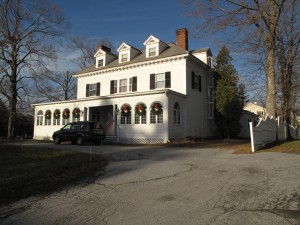

Thirty five and forty five Walker were built as “overflow” guest houses for the Bishop family
Thirty Five, called the Henry W. Bishop House was built in 1885 and is currently (2016) an inn.
Forty Five, called the David W. Bishop House was built in 1895 and is currently offices.
*Orleton
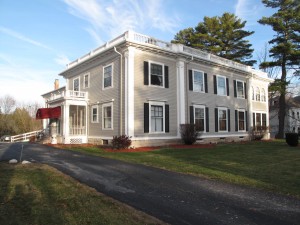
Built as a summer home for Harley Procter, the classical revival style house is said to have been designed to resemble a bar of Ivory Soap.
Harley Procter, son of one of the founders, introduced many of the concepts of modern advertising and marketing. He presumably cashed in big when the P & G partnership incorporated in 1890.
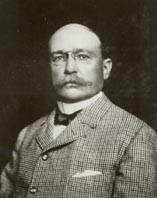
The Procters occupied the house for just a short time, selling it in 1919 to Graham Root, who used it as a real estate office. Subsequent uses included a charm school in the 1930’s, a guesthouse, and office space. In 1942 it became Gateways Inn, by which name it is still known.
*The Old Lenox Club/Community Center
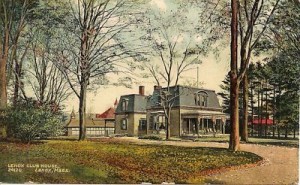
Heaven forbid the gentleman visiting their estates in Lenox should be without a place to hobnob, so they founded the Lenox Club in 1864. They built a “modest” (at least in terms of the excesses of the day) clubhouse mid century and proceeded to bowl in their own
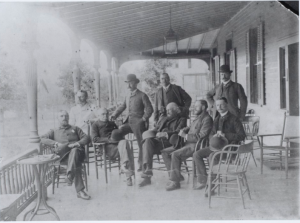
bowling alley, smoke cigars, play cards, etc. It was incorporated as a reading club for gentlemen in 1874.
Later the club leased a nine-hole private golf course off Yokun on property belonging to Dr. John C. Greenleaf.
In 1914, after Dr. Greenleaf’s death, the house, outbuildings golf course and the entire ninety acres was purchased by the Club. In 1924 the nine hole golf course was expanded to eighteen holes and the ‘Lenox Golf Club’ was formed in association with the Aspinwall and Curtis Hotels both of which used the course for their guests.
The arrangement lasted until 1932 when the Aspinwall Hotel burned. This event and the difficult financial situation caused by the Great Depression led to abandonment of the golf course which gradually became replaced by a heavily wooded forest.
Very active interest in the Club was revived and major improvements to the clubhouse and grounds were initiated in the 1980s.
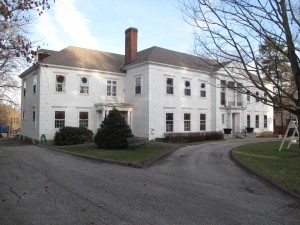
In 1921 George E. Turnure purchased the Walker St. site and built a new community center in memory of his son who had been killed in the First World War. This new community center became the home of the Lenox Brotherhood Club, an organization made up of the union of the Men’s clubs of the Episcopal and Congregational Churches. The community center provided recreational facilities such as a tennis court, billiard room, gymnasium, and bowling alley. The center also has a large hall and stage. Membership in the club expanded in the 1930’s and eventually became open to all. It is currently owned by the Town of Lenox, and provides programs for the community such as the Council on Aging for seniors, youth programs, fitness classes, and meeting space.
*Pine Acre

Mrs. M. E. Rogers of Philadelphia had this house built in 1885, for use as a summer residence. By 1890 the house had been rented for the season to John Burrell, and in 1892 it was sold to Nancy W. Wharton (Mrs. William C.) who summered here with her daughter.
Mrs. Wharton’s son, Edward, (1850-1928) was
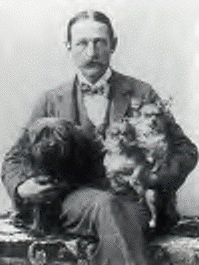
married to novelist Edith Wharton who was to become one of the most illustrious residents of Lenox. After spending several summers in Newport, Edith Wharton, displeased with both the climate and the lack of intellectual life there, came to Lenox. She stayed at “Pine Acre”, home of her mother-in law and sister-in-law, who were abroad at the time. She was very impressed with Lenox that she returned to “Pine Acre” the following summer and, in February of 1902, returned to Lenox to look for a house site of her own. While looking for the site she stayed at the Curtis Hotel. She spent one last summer at “Pine Acre” in 1902, while her house, “The Mount”, was under construction.
Mrs. William C. Wharton continued to stay at “Pine Acre” for several summers until her death in August of 1909 in Lenox. Teddy Wharton spent many of his declining years here after he and Edith divorced.
For awhile the property was run as an inn and known as “Three Gables,” or “The Gables.” It is currently (2016) condominiums.
*Col Oliver House
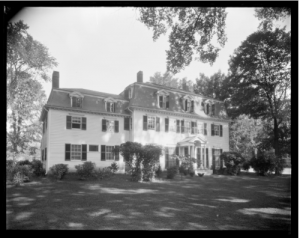
This property was originally owned by William T. Walker and his wife and was sold to Edwin Spencer in 1852. Mrs. Marion R. Oliver built this house on the site of an earlier house, built by Edwin (Edmund?) Spencer in 1852, and by 1896, had the original house demolished and a more fashionable one built in its place. In 1896 the property was sold to Mr. and Mrs. John Struthers, frequent summer visitors to Lenox. The Struthers’ christened the house “Wynnstay.” and used it for many years as a summer residence. It is currently operated as an inn under the name “Hampton Inn.”
Ventfort Hall
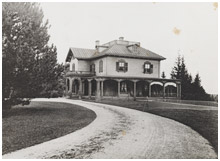
Ogden Haggerty, a successful banker and intellectual, had been visiting the Wards and the Sedgwicks for a number of years and often renting a property from Mr. Stanley located where Ventfort Hall is today. In 1853 The Haggertys purchased the property and built a home of their own.
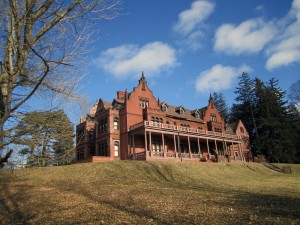
In 1891, Sarah and George Morgan purchased the property, moved the original Vent Fort across the street, and used Rotch and Tilden to build a Jacobean mansion of their own.
The original Vent Fort was being used by Lenox Country Day school when it burned in 1961. Much of the extensive average of the Morgan’s Ventfort were sold off for Morgan Manor and individual house lots. The mansion sits on the remaining average and has been restored and is open as a Museum of the Gilded Age.
*Sunny Bank

This wood frame home was built in 1865 for General and Mrs. F. C. Barlow. When the Bruno Aron family was running Ventfort Hall as Festival House, Sunny Bank was used for overflow guests. It is currently a private home.
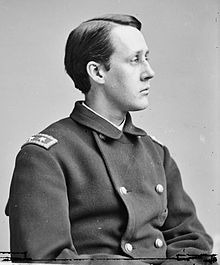
Francis Channing Barlow (1834-1896), despite his obvious youth in this photo, became a general by the end of the Civil War. In the small world category, he married, at the end of the war, the sister of Robert Gould Shaw who had married Annie Kneeland Haggerty and honeymooned at Ventfort Hall. A lawyer by training, F.C. Barlow founded the American Bar Association.
Thistlewood

In 1887, Mr. and Mrs. David Lydia needed an escape from Westchester. The family estate, West Farms was being incorporated into the Bronx. They hired Rotch and Tilden to build the lovely Colonial Revival at 151 Walker St. The interior has been significantly altered but the exterior and grounds remain quite similar to the original design. It is a private home.
———–
*Technically these were just very nice summer homes – not quite up to the gigantic scale of the “cottages.”
————-
For much more on the architecture of these houses and the people who lived in them, see
Houses of the Berkshires, 1870-1930, by Richard S. Jackson Jr. and Cornelia Brooke Gilder, Acanthus Press, 2006
The Berkshire Cottages, A Vanishing Era, by Carole Owens, Cottage Press, Inc. 1980
